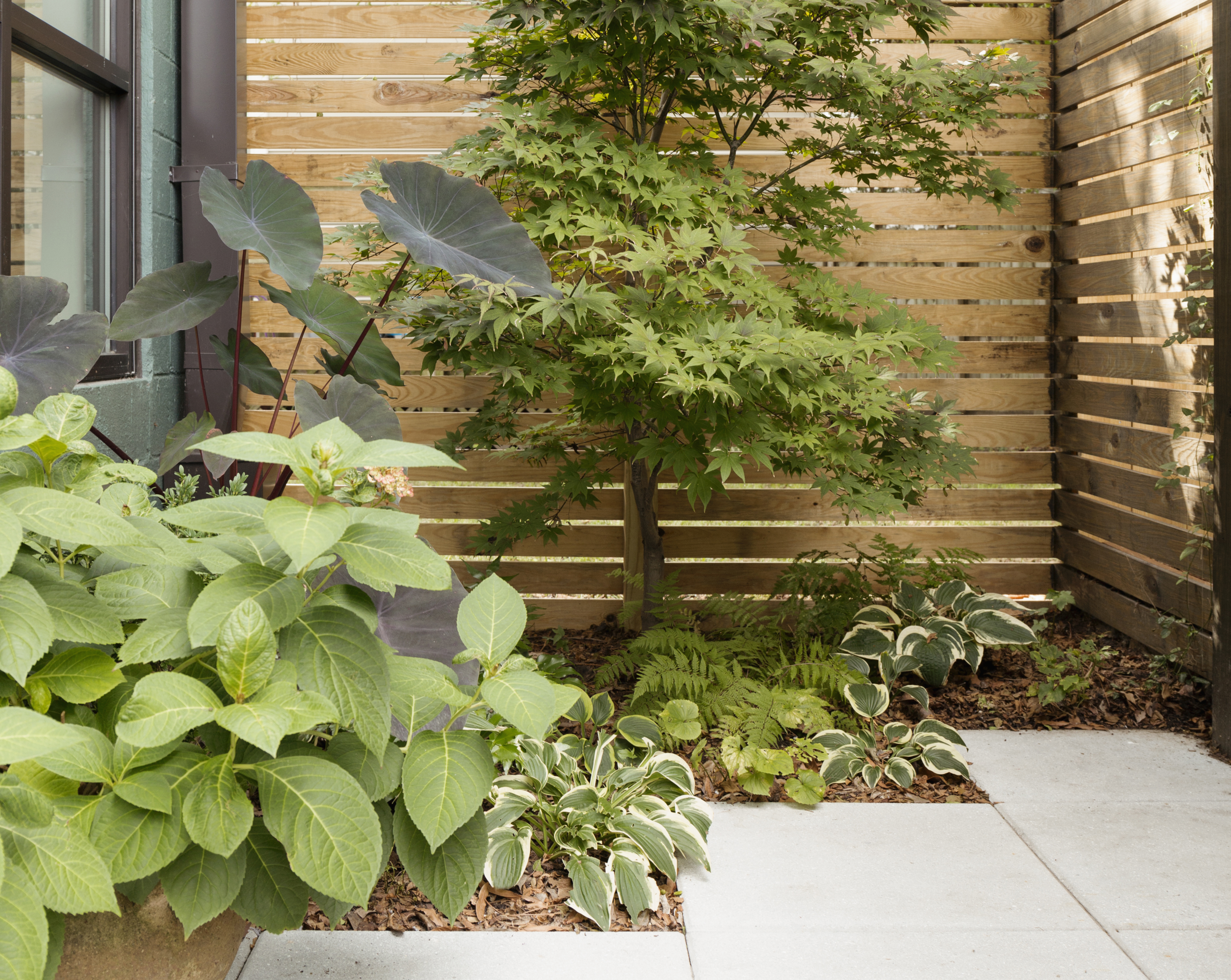
With summer in full swing, increasing curb appeal is back on every home enthusiast's to-do list. Perhaps it's the fact that summer is in full swing or maybe it's the onset of pleasant weather that provides us with the perfect opportunity to give our home exterior a much-needed touch-up. Either way, we can't resist a chance to make our homes look trendy and inviting from the outside in to make the best first impression on guests and passersby.
When it comes to landscaping our homes, privacy fences tend to be a more practical addition than an aesthetic one, but giving your panels a generous stain can help brighten up your fence if it's looking worse for wear. If you're wondering how to get started with staining your fence, the experts have given us a play-by-play on what we need to do to stain our fences like a pro, and there's no time like the present to give it a try.
1. prep your fence for staining

Just like how to paint a fence, staining all starts with the prep work. Skip on these steps, and you won't have a neat or durable finish.
According to Chuck Reger of Five Star Painting, new fences should not be stained right away. He explains that the type of wood used in your new fence will influence when you should stain it and advises homeowners to examine the wood before staining it. 'Wet wood won’t allow the stain to properly penetrate the wood grain and protect the wood,' notes Chuck. 'A good rule of thumb is to pour a few drops of water on the wood, if it beads up, the wood is still too wet but if the water soaks into the wood, it’s ready for stain.'
Rosie Anna, CEO of Lakeview Painting, also advises homeowners to pressure clean the fence and spot-treat the wood if mold or mildew is present. 'Put on protective gloves, mix a bucketful of bleach and water, and use a garden sprayer to apply the solution to the slats,' says Rosie. 'Let it sit for a few minutes, then use a power washer or high-pressure spray nozzle to rinse the fence clean.' As the final step in preparation, she recommends laying down a drop cloth to protect the plants and the surrounding area from damage.
2. Apply the stain

Once you're done preparing your fences, select the stain that works best for your exterior. Chuck tells us that most oil stains only take one coat and advises against over-coating as the stain may not cure and could stay tacky and shiny. We like this affordable fence stain option from Amazon.
'Apply your stain with a medium-thick roller cover and back brush the stain in for complete coverage,' Chuck says. If your home's fence has been stained in the past, he recommends sticking to the same base as changing types can lead to adhesion issues later on.
After applying the stain all over the fence, allow it to dry as directed by the stain manufacturer. Rosie also suggests applying a single coat of clear, weatherproof sealant using a brush, roller, or sprayer for the best results. 'To obtain a homogeneous look, quickly back-brush unsealed grooves and recesses with a wide brush,' she notes. 'For smoother results, paint vertically, not horizontally, unless you’re painting or staining a bottom board.'
As soon as the sealant is completely dry, your fence will be ready to go. These steps are perfect for any type of wood fence, and while it may take some patience, you'll be left with a fresh fence that's sure to be the envy of the neighborhood.
Our top buys for fence staining
FAQs
How long should you wait before staining your fence?
According to Chuck, when it comes to kiln-dried lumber, which is what most hardware stores sell, the wood should dry out for one to two months before applying wood treatment. 'For treated lumber, allow the wood to dry out for six months before applying any wood treatment,' says Chuck. 'And for green lumber, which is freshly cut wood, the wood should dry one year for every inch of thickness.'
What is the best weather for staining a fence?
Rosie also advises against staining damp wooden fences and informs us that it's best to examine the weekly weather forecast and choose a day with low to moderate humidity, with temperatures between 50 and 80 degrees, and no chance of precipitation for the following 24 hours before staining a wood fence. For fences that have already been treated with stains in the past, Rosie recommends applying wood stain remover and using a stiff bristle brush to get rid of the previous coat.
How often should you re-stain your fence?
According to Rosie, fence stain needs to be reapplied at least every three years to keep your exterior looking fresh and to maintain the health of your fence. She also adds that fence paint can be reapplied every five to six years.







